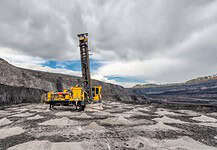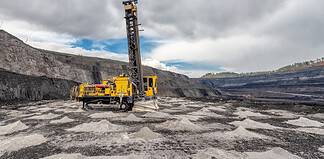Canada’s largest diamond producer, the Diavik mine, 100%-owned and operated by Rio Tinto (ASX: RIO), will build the largest solar power plant across the country’s territories, as the mining giant moves towards achieving net zero across its operations by 2050.
With more than 6,600 solar panels generating about 4,200MW-hours of carbon-free electricity annually for the mine, the solar power plant will provide up to 25% of Diavik’s electricity during closure work that will run until 2029, with commercial production from the operation expected to end in early 2026.
Diavik Diamond Mine president and chief operating officer Angela Bigg says she is delighted the mine will be significantly increasing its renewable power generation with the largest solar power plant in Canada’s northern territories.
“Through its wind-diesel hybrid power facility, Diavik is already a leader in cold climate renewable technology and this important project reinforces our dedication to reducing our carbon footprint,” she said.
The project is supported by $3.7m (CAN$3.3m) in funding from the Government of the Northwest Territories’ Large Emitters GHG Reducing Investment Grant program, and $685,000 (CAN$600,000) from the Government of Canada’s Clean Electricity Investment Tax Credit.
Canada’s Government of the Northwest Territories Finance Minister Caroline Wawzonek says this development is a welcome sign of Rio Tinto’s commitment to renewable energy and reducing emissions.
“The Government of the Northwest Territories is pleased to have provided support through the Large Emitters GHG Reducing Investment Grant program, one of the original pieces of our made-in-the-NWT approach to the federal carbon tax,” she said.
“This collaboration exemplifies our commitment to facilitating sustainable development while reducing greenhouse gas emissions in the Northwest Territories and should be a signal of how our economic development can continue to position us as leaders in these spaces.”
The facility will be equipped with bi-facial panels which generate energy from direct sunlight and light that reflects off the snow that covers Diavik for most of the year.
It will cut diesel consumption at the site by approximately 1ML per year and reduce emissions by 2,900t of CO2 equivalent, which is comparable to eliminating the emissions of 630 cars.
The solar power plant will significantly expand Diavik’s renewable energy generation, which currently features a wind-diesel hybrid power facility that has a capacity of 55.4MW and provides the site’s electricity.
Diavik is working with the Government of the Northwest Territories and community partners to determine how its renewable energy infrastructure can best benefit the region following closure.
Construction will start in coming weeks and the solar power plant will be fully operational in the first half of 2024.









































